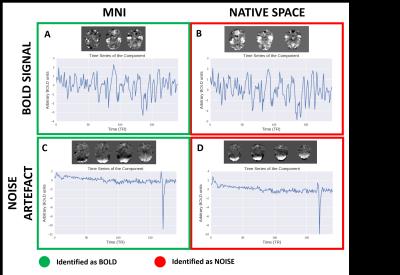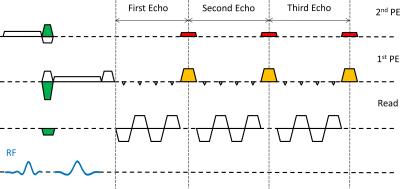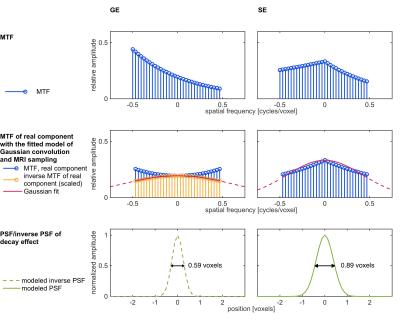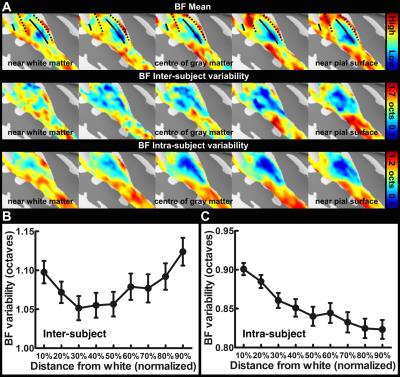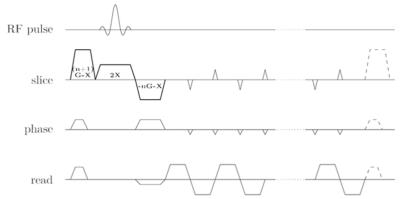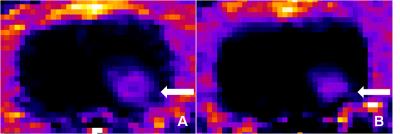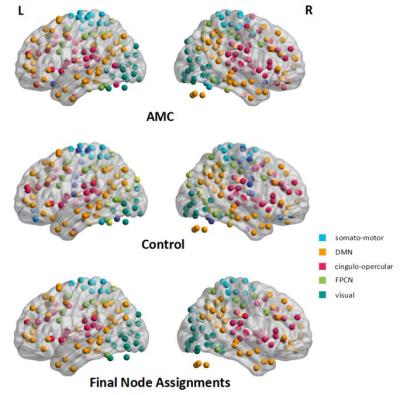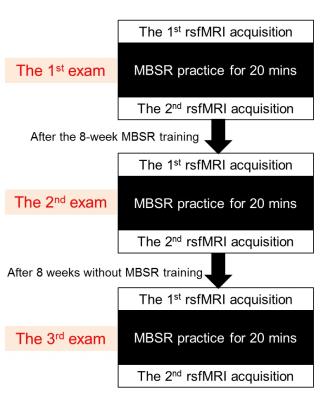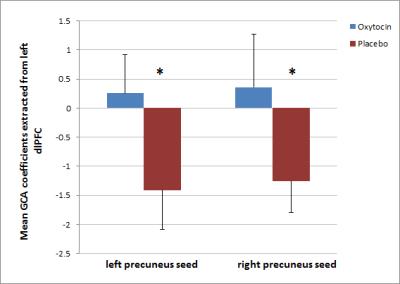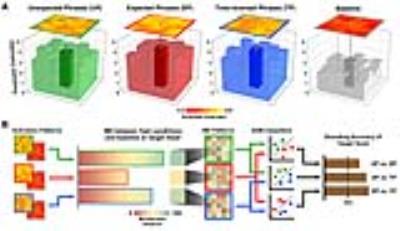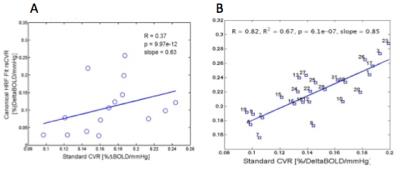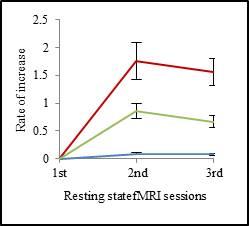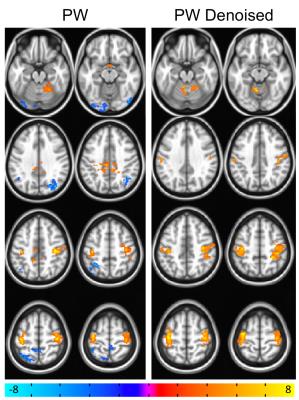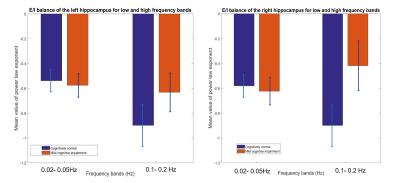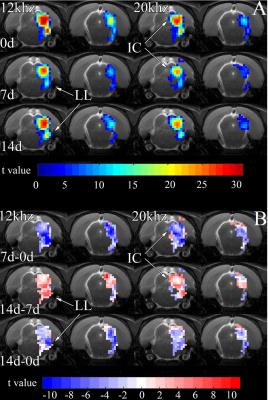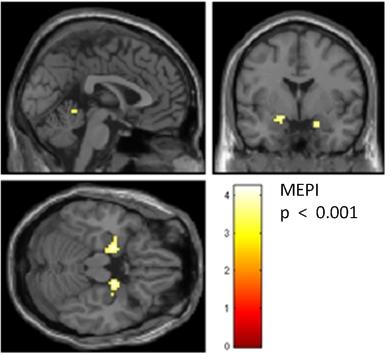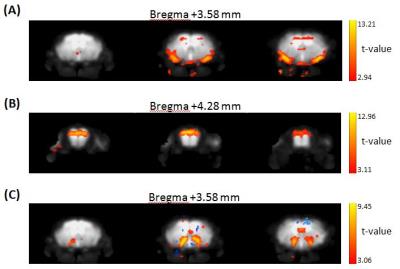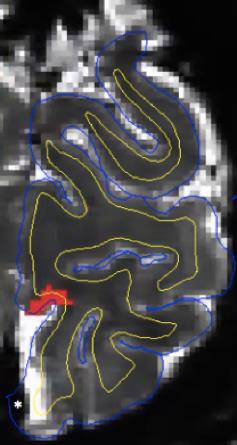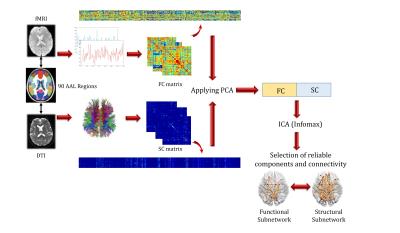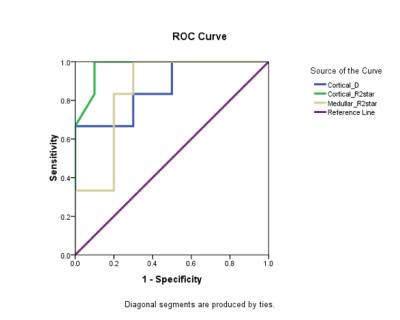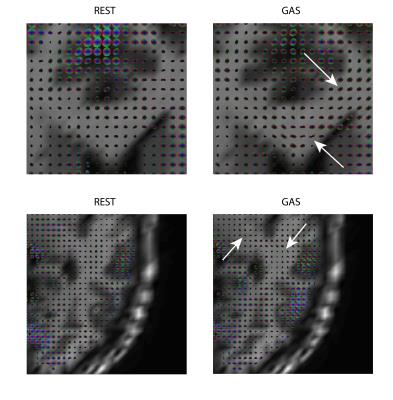fMRI: Multimodal
Electronic Poster
fMRI
Thursday, 27 April 2017
| Exhibition Hall |
09:15 - 10:15 |
| |
|
Computer # |
|
5393.
 |
73 |
How does chronic neuroinflammation affect resting state functional connectivity? 
Esteban Oyarzabal, SungHo Lee, Manasmita Das, Sheng Song, Yen-Yu Ian Shih
Chronic neuroinflammation, present in most neuropathologies, has long-term consequences on neurocircuit connectivity synchrony and strength. By implementing multi-modal techniques to quantify neuroinflammation, we found a strong association linking the intensity of neuroinflammation with depressed functional connectivity. We partly attribute these changes to neurodegeneration and the loss of central NE.
|
|
5394.
 |
74 |
The Combine Analysis of improved Multi-parametric MR for identifying the different subtypes and immunohistochemical expression of Breast cancer - video not available
Weixiong Fan, Xiaofeng Chen, Fengyan Cheng, Yabao Cheng, Tai Xu, Guijin Li, Xiaolei Zhu, Shuai Li
The aim of this study was to explore the different subtypes and immunohistochemical expression of breast cancer in improved multi-parametric MR imaging. By introducing the free breathing of ultrafast temporal resolution dynamic VIBE (TWIST-VIBE) and readout segmentation of long variable echo-trains (RESOLVE) techniques, quantitative pharmacokinetic (PK), semi-quantitative DCE-MRI based on curve of time concentration and diffusion parameters were extracted to analyze it. The results show that significant differences in multi parametric parameters Kep and rADC among the different subtypes of Breast cancer. Those parameters were hopeful to be a non-invasive measurement for assessing the subtypes and the biology, histological features of breast cancer.
|
|
5395.
 |
75 |
Fluctuations of the EEG-fMRI correlation reflect intrinsic strength of functional connectivity in default mode network 
Tuija Keinänen, Seppo Rytky, Vesa Korhonen, Juha Nikkinen, Osmo Tervonen, Matias Palva, Vesa Kiviniemi
Resting-state networks (RSN) functional connectivity has shown to be temporally dynamic in the brain. Also the correlations between infra slow fluctuations in electroencephalography (EEG) and blood oxygen level-dependent signal have shown dynamic variability over time. Here, we used simultaneous EEG-fMRI with ultra-fast magnetic resonance encephalography to study the link between the variations of these correlations and variations in RSN functional connectivity. The results suggest that the correlation strength is markedly linked to the strength of underlying functional connectivity. This leads to low correlations when averaged over a long period, high momentary synchrony can be reached due to intrinsic RSN dynamics.
|
|
5396.
 |
76 |
Neurochemical Basis of the BOLD Change in Attention Control - a combined task-based fMRI and 1H-MRS 
Pui Wai Chiu, Hui Zhang, Issac Ip, Savio Wai Ho Wong, Tianyin Liu, Gloria Hoi Yan Wong, Queenie Chan, Kelvin Kai Wing Yau, Leung Wing Chu, Henry Ka Fung Mak
fMRI can indirectly measure brain activity, but the biochemical underpinnings of the BOLD changes are still unknown. Nevertheless, 1H-MRS can bridge such gap by measuring Glx [summation of glutamate (Glu) and glutamine (Gln)], where Glu is one of the mediators of neurovascular coupling. In this study, we aim to elucidate the complex relationship between attention control (numerical Stroop) and its associated neurochemical changes by combining the biochemical information from task-based fMRI and 1H-MRS. Our result showed that the anterior cingulate cortex was positively correlated with Glx. This is the first study providing neurochemical explanation of the BOLD change during attention control task.
|
|
5397.
 |
77 |
Empirical Model Decomposition Removes Non-stationary EEG Noise in Simultaneous fMRI-EEG Acquisition 
Kevin Tsai, Hsin-Ju Lee, Wen-Jui Kuo, Jo-Fu Lotus Lin, Fa-Hsuan Lin
Non-stationary EEG noise from simultaneous fMRI-EEG acquisition could be conventionally removed by optimal basis selection and followed by a low-pass filtering. An empirical model decomposition (EMD) method was applied to partially remove non-stationary EEG noise from simultaneous fMRI-EEG acquisition. Our results suggested that EMD method could reveal similar auditory evoked potential with optimal basis selection and low-pass filtering without prior knowledge or cut-off frequency, thus preserving high frequency signal not empirically related to the non-stationary noise. This EMD method allows us to investigate human brain high frequency EEG oscillation in the simultaneous fMRI-EEG measurement.
|
|
5398.
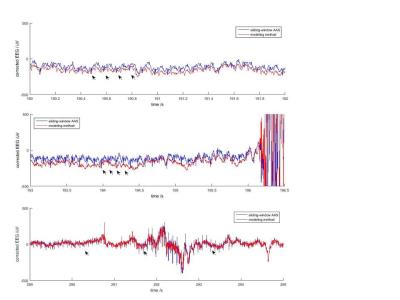 |
78 |
Correcting motion-affected gradient artifacts in EEG-fMRI: a modeling approach 
Shuoyue Zhang, Bruno Riemenschneider, Maxim Zaitsev, Jürgen Hennig, Pierre LeVan
Simultaneous acquisition of electroencephalography (EEG) and functional magnetic resonance imaging (fMRI) is extensively applied for brain mapping due to the high temporal resolution of EEG and high spatial resolution of fMRI. But gradient artifacts on the EEG cannot be optimally corrected in the presence of abrupt head movements. In this work, we demonstrate a method to model motion-related gradient artifacts. Thus we obtain not only an improvement in gradient artifact correction, but also infer motion information directly from the EEG.
|
|
5399.
 |
79 |
Investigation of the relationship between metabolic basis of thalamus and brain spontaneous activity revealed by a study combined fMRI and MRS 
Zhengge Wang, Bing Zhang, Bin Zhu
Several recent studies have reported a correlation between regional glutamate concentration and BOLD activation. In this study, we combined resting-state fMRI and MRS to investigate whether this association maintain in spontaneous brain activity in the thalamus. Significant positive correlation was found between glutamate concentration and the ALFF and ReHo in left thalamus; negative correlation between glutamate and DC in left thalamus. Furthermore, the ALFF of left primary motor cortex and bilateral auditory cortex were affected by left thalamus glutamate. This provides insight into better understanding the neuronal and biochemical mechanisms of thalamus function.
|
|
5400.
 |
80 |
Comparison of fMRI and MEG language localization tasks—a prospective study of noninvasive presurgical functional mapping - video not available
Li Zheng, Jingwei Sheng, Tianyi Qian, Thomas Beck, Jia-hong Gao
In patients with intractable epilepsy, anomalous cortical organization could be observed and pre-surgical planning involving the localization of cortical language areas is critical. As a prospective study, we compared language localization using functional magnetic resonance imaging (fMRI) and magnetoencephalography (MEG) with advanced source estimate method in 18 volunteers. Group analysis results showed something similar or discordant between fMRI and MEG activation. It is consider that fMRI technique combined MEG can used for the preoperative localization and postoperative functional evaluation in the future.
|
|
5401.
 |
81 |
Low frequency activity from somatosensory thalamus propagates brain-wide and modulates top-down visual processing 
Alex T. L. Leong, Russell W. Chan, Xunda Wang, Celia M. Dong, Leon C. Ho, Ed X. Wu
Top-down/descending control is a critical stage in sensory processing that underlies numerous cognitive processes. Recent studies uncovered the prevalence of converging long-range networks across multiple sensory modalities as anatomical substrates that likely mediate sensory top-down control. Using an optogenetic fMRI technique that we recently developed to examine patterns of large-scale brain-wide interactions mediated by the somatosensory thalamo-cortical network, we demonstrated that propagating low frequency activity (~1Hz) underlying such interactions enhanced visual responses in the superior colliculus. This work presents a new approach to investigate the functional roles of top-down control and their underlying brain mechanisms.
|
|
5402.
 |
82 |
Correction of Gradient Artefacts in Simultaneous EEG-FMRI from Rotating Gradient Trajectories 
Mark Chiew, Jostein Holmgren, Nadine Graedel, Dean Fido, Catherine Warnaby, Karla Miller
We propose a method for correcting gradient artefacts in simultaneous EEG-FMRI that are variable from shot-to-shot, where artefacts cannot be identified via averaging. The artefact model is extracted from a data-driven decomposition that identifies the signal contributions which show geometric variation matching that of the trajectory rotation model. We show that this correction, applied to a rotating EPI trajectory, works just as well as standard approaches applied to conventionally sampled (non-rotating) EPI data. This will allow the use of more flexible sampling approaches in simultaneous EEG/FMRI that facilitate highly accelerated dynamic image reconstruction.
|
|
5403.
 |
83 |
Simultaneous trimodal MR-flumazenil-PET-EEG imaging in a rest-task-rest design in humans 
Irene Neuner, Ravichandran Rajkumar, Praveen Sripad, Christine Wyss, Jörg Mauler, Lutz Tellmann, Elena Rota Kops, Jürgen Scheins, Markus Lang, Frank Boers, Christoph Lerche, Johannes Ermert, Bernd Neumaier, Jürgen Dammers, Karl-Josef Langen, Hans Herzog, Wolfram Kawohl, N Jon Shah
How quickly does the human brain switch back from a task mode to the resting state condition? This question is addressed in a small sample of healthy volunteers employing a simultaneous trimodal MR-flumazenil-PET-EEG approach at 3T. Based on the fMRI results, we observe an increase in ReHo - a measure of local connectivity - coupled with a slight decrease in the binding potential of [11C] Flumazenil in the PCC which is a major hub of the default mode network; this indicates a change of the GABA-ergic driven inhibitory tonus. This is accompanied with changes in the alpha band over parietal electrodes.
|
|
5404.
 |
84 |
GABA MRS combined with resting state functional connectivity to explore decoding and fluency skills of typical and struggling readers 
Lisa Krishnamurthy, Venkatagiri Krishnamurthy, Dina Schwam, Daphne Greenberg, Robin Morris
Previous reports have shown that resting concentrations of gamma-amino butyric acid (GABA) will predict resting state Functional Connectivity (rsFC) measures as well as amplitude of task activation. The goal of this study is to model how the neurochemical profile interplays with the connectivity underlying the decoding and fluency components of the reading circuit. Our model is in support of recent task-based fMRI observations, but goes beyond by interrogating the underlying networks that support the behavior, and combining that information with the neurochemistry that characterize the trait. These preliminary results of combining MRS and rsFC with neuropsychological measures are promising, and will help identify the underlying dysfunction in struggling adult readers’ brain circuitry.
|
|
5405.
 |
85 |
Multimodal meta-analysis of neural correlates in first-episode drug-naïve major depressive disorder 
Weina Wang, Youjin Zhao, Xinyu Hu, Qiyong Gong
Evidence of structural and resting-state functional brain abnormalities in MDD has been inconsistent. We conducted the first multimodal meta-analysis of voxel-based morphometry (VBM) and amplitude of low-frequency fluctuation (ALFF) studies in first-episode drug-naïve MDD patients. 15 VBM data setsand 11 ALFF data sets were included. A multimodal meta-analysis was used to highlight brain regions with both structural and functional abnormalities. The multimodal meta-analysis identified conjoint structural and functional differences in the left lateral orbitofrontal cortex and right supplementary motor area. Dissociated anatomical and functional brain abnormalities in MDD were also observed. Meta-analysis revealed in MDD a complex pattern of conjoint and dissociated structural and functional brain abnormalities in brain regions involved in cognition and emotional processing.
|
|
5406.
 |
86 |
Multimodal functional imaging using modified fMRI-weighted minimum-norm estimation - video not available
Jing Xu, Tianyi Qian, Thomas Beck, Jia-Hong Gao
Multimodal functional neuroimaging by combining fMRI and EEG has been studied to achieve high-resolution reconstruction of the spatiotemporal cortical current density (CCD) distribution. Although fMRI-constrained EEG/MEG source imaging can enhance spatiotemporal resolution of functional neuroimaging, it has been reported that hard fMRI constraint can result in misidentification of neuronal sources if mismatches exist between fMRI activations and EEG/MEG sources. In this study, we propose a new method modified fMRI-weighted minimum-norm estimation (mfMNE) to solve the problem of fMRI–EEG integrated source imaging. This method may be a promising option for solving the mismatches between fMRI and EEG/MEG in the fMRI-constrained EEG/MEG source imaging.
|
|
5407.
 |
87 |
A Comparison of BOLD Signal Amplitude and Electrical Activity During Task Performance in MS and Healthy Control Subjects: Evidence of Neurovascular Decoupling 
Mark Lowe, Wanyong Shin, Balu Krishnan, Lael Stone
Recent reports indicate that cerebrovascular reactivity (CR) may be impaired in multiple sclerosis (MS). Here we report initial studies to use simultaneous measurements of electroencephalography (EEG) and BOLD during performance of a motor task. Using EEG-derived predictors of BOLD response, we show that, while EEG robustly predicts the amplitude of the BOLD signal in healthy control subjects, the estimation is very poor in MS patients. This could be direct evidence of cerebrovascular decoupling of the BOLD signal in MS.
|
|
5408.
 |
88 |
Investigation of neural mechanism underlying ipsi- and contra-lateral acupuncture analgesia in the capsaicin-induced pain model 
Xuan Niu, Yuchen Zhang, Qiuli Zhang, Haining Li, Zhuonan Wang, Yingxiang Sun, Lijun Bai, Ming Zhang
This paper presents an original research to investigate the underlying neural mechanism on analgesia at ipsi- or contra-lateral acupuncture with capsaicin-induced allodynia on human body. Our findings further suggested that DMN participants in the modulation of spatial-oriented attention on placebo analgesia as a mechanism underlying the degree to which treatment side corresponding to the pain. Notably, disruptions of the DMN may account for the cognitive and behavioral impairments in chronic pain patients. In addition, it may possibly reflect individual variation in placebo response, thus, as a valuable neural biomarker to predict clinical curative effect in acupuncture treatment.
|
|
5409.
 |
89 |
Altered structure and function reflect chronic pain in patients with idiopathic trigeminal neuralgia 
Yuan Wang, Dongyuan Cao, Bethany Remeniuk, David Seminowicz, Ming Zhang
To testify the hypothesis of morphometric and functional alterations of patients with idiopathic trigeminal neuralgia (ITN), we displayed gray matter volume (GMV) reductions in the anterior and middle cingulate cortex (ACC and MCC), insula, and several regions of temporal lobe. Additionally, enhanced functional connectivity was revealed between right insula and ACC, medial prefrontal cortex, posterior cingulate cortex (PCC), and dorsal lateral prefrontal cortex in ITN patients. Furthermore, GMV of left inferior temporal gyrus negatively correlated with pain intensity and disease duration in patients, and connectivity of right insula-ACC was negatively associated with pain scores, depression, and anxiety ratings, respectively.
|
|
5410.
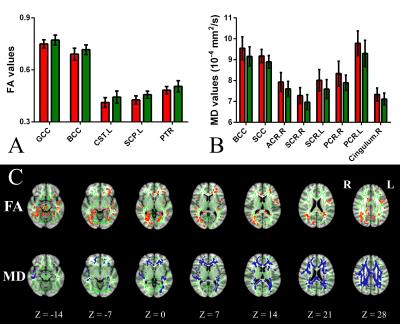 |
90 |
Alterations of white matter integrity and hippocampal functional connectivity in type 2 diabetes without cognitive impairment 
Qian Sun, Guan-Qun Chen, Yu Ying, Yu-Chuan Hu, Lin-Feng Yan, Xin Zhang, Yang Yang, Wen Wang, Ying Han, Guang-Bin Cui
Researchers and clinicians interested in neuroimaging and type 2 diabetes mellitus without cognitive impairment, with a particular interest in diffusion tensor imaging (DTI) and resting state functional magnetic resonance imaging (rs-fMRI)
|
|
5411.
 |
91 |
Detecting gamma frequency neural activity using simultaneous multiband EEG-fMRI 
Makoto Uji, Ross Wilson, Susan Francis, Stephen Mayhew, Karen Mullinger
We establish a methodology for optimal combination of simultaneous EEG recording with sparse multiband fMRI that preserves high resolution, whole brain fMRI coverage with broad-band EEG signal measurement uncorrupted by MR gradient artefacts. We demonstrate the ability of this approach to record gamma frequency (>50Hz) EEG signals, that are usually obscured during continuous fMRI data acquisition. In a novel application to a motor task we observe a positive correlation between gamma and BOLD responses, supporting and extending previous findings concerning the coupling between neural and haemodynamic measures of brain activity.
|
|
5412.
 |
92 |
SomatoMotor Mapping in MEG 
Eleanor Barratt, George O'Neill, Rosa Sanchez-Panchuelo, Matthew Brookes, Susan Francis
Sensorimotor mapping allows separation of the brain’s representation of individual digits. This is possible using functional magnetic resonance imaging (fMRI), but is more challenging in magnetoencephalography (MEG) where it has been demonstrated by mapping evoked responses. Here, we use ultra-high field (7T) fMRI to map digits in a finger-tapping experiment, and contrast our findings to equivalent results showing the spatial signatures of beta band oscillatory responses measured in MEG. We show that the MEG beta rebound can be mapped topographically.
|
|
5413.
 |
93 |
Toward real-time head motion corrections in simultaneous EEG-fMRI: Convolutional neural network classification of EEG-derived motion independent components. 
Chung-Ki Wong, Vadim Zotev, Raquel Phillips, Masaya Misaki, Jerzy Bodurka
In EEG-fMRI, EEG electrodes record head motions with a high temporal resolution (EEG-motion-sensor), which can be utilized for retrospective slice-by-slice fMRI motion correction. EEG motion components derived from independent component (IC) analysis were automatically identified by the common features observed in the IC mean power spectral density, spatial projection topographic map, and signal contribution. For real-time application of the EEG-motion-sensor, pre-trained models are desirable for faster classification. We used convolutional neural network to evaluate performance of motion-IC classification model. High speed and classification accuracy were achieved on a large EEG-fMRI dataset, suggesting the possibility of real-time EEG-motion-sensor applications for fMRI.
|
|
5414.
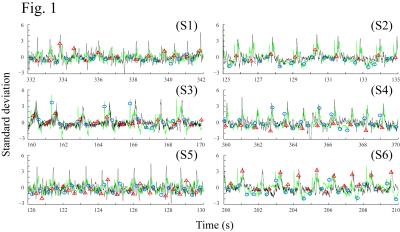 |
94 |
Multi-scale peak detection method for an automatic cardioballistic artifact period determination directly from EEG-fMRI data 
Chung-Ki Wong, Qingfei Luo, Vadim Zotev, Raquel Phillips, Jerzy Bodurka
In simultaneous EEG-fMRI, the period of cardioballistic artifact (BCG) in EEG is required for the artifact removal. Recording the electrocardiogram (ECG) waveform during fMRI is difficult, often causing inaccurate period detection. Since the BCG artifact waveform in EEG-fMRI is relatively invariable compared to the ECG waveform, we propose a multiple-scale peak-detection algorithm to determine directly the BCG period from EEG-fMRI data. The algorithm achieves a high detection accuracy of the BCG artifact occurrence on a large EEG-fMRI dataset without using the ECG waveforms, virtually eliminating the need for ECG for BCG artifact removal.
|
|
5415.
 |
95 |
Effect of DBS stimulation intervals on brain activity and dopamine release 
Christin Sander, John Arsenault, Bruce Rosen, Wim Vanduffel, Joseph Mandeville
In this study, deep brain stimulation with chronically implanted electrodes in the unilateral ventral tegmental area of a monkey was performed. The purpose was to determine stimulation paradigms for a range of inter-stimulation intervals that would enable the simultaneous observation of brain activity using fMRI and endogenous dopamine release using [11C]raclopride-PET. While long inter-stimulation intervals produced a unilateral focal CBV response in the striatum but no change in [11C]raclopride binding, short intervals produced a more widespread CBV response and displacement of [11C]raclopride. This study shows the effect of stimulation parameters on brain activity, neurotransmitter release and its limits of detectability.
|
|
5416.
 |
96 |
Mapping TMS immediate effects by concurrent TMS/fMRI using a dedicated high-sensitivity coil array 
Martin Tik, Michael Woletz, Lucia Navarro de Lara, Ronald Sladky, André Hoffmann, Allan Hummer, Nicole Geissberger, Christian Windischberger
In this work we show the feasibility of a novel concurrent TMS/fMRI setup based on two multi-channel receive arrays that allows for whole brain fMRI data acquisition during brain stimulation. We show that stimulation at frequencies of 1 and 10Hz, respectively, leads to distinct changes in BOLD signal. We also report increased TMS-related network effects with higher stimulation. This validity check sets the frame for efficacy studies investigating the TMS stimulation of cortical areas for modulating complex brain networks.
|
|



